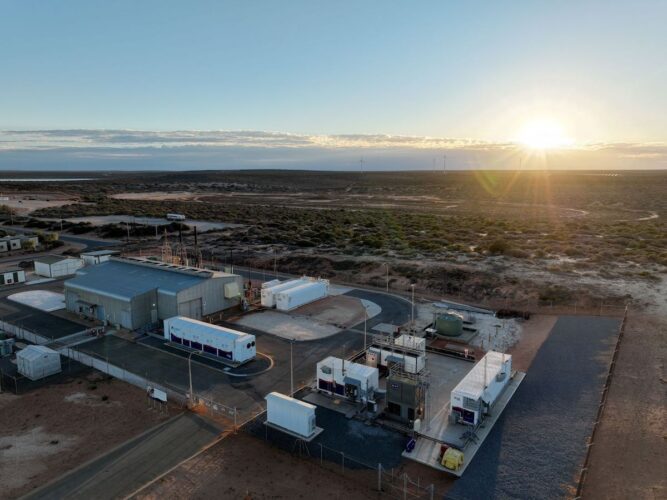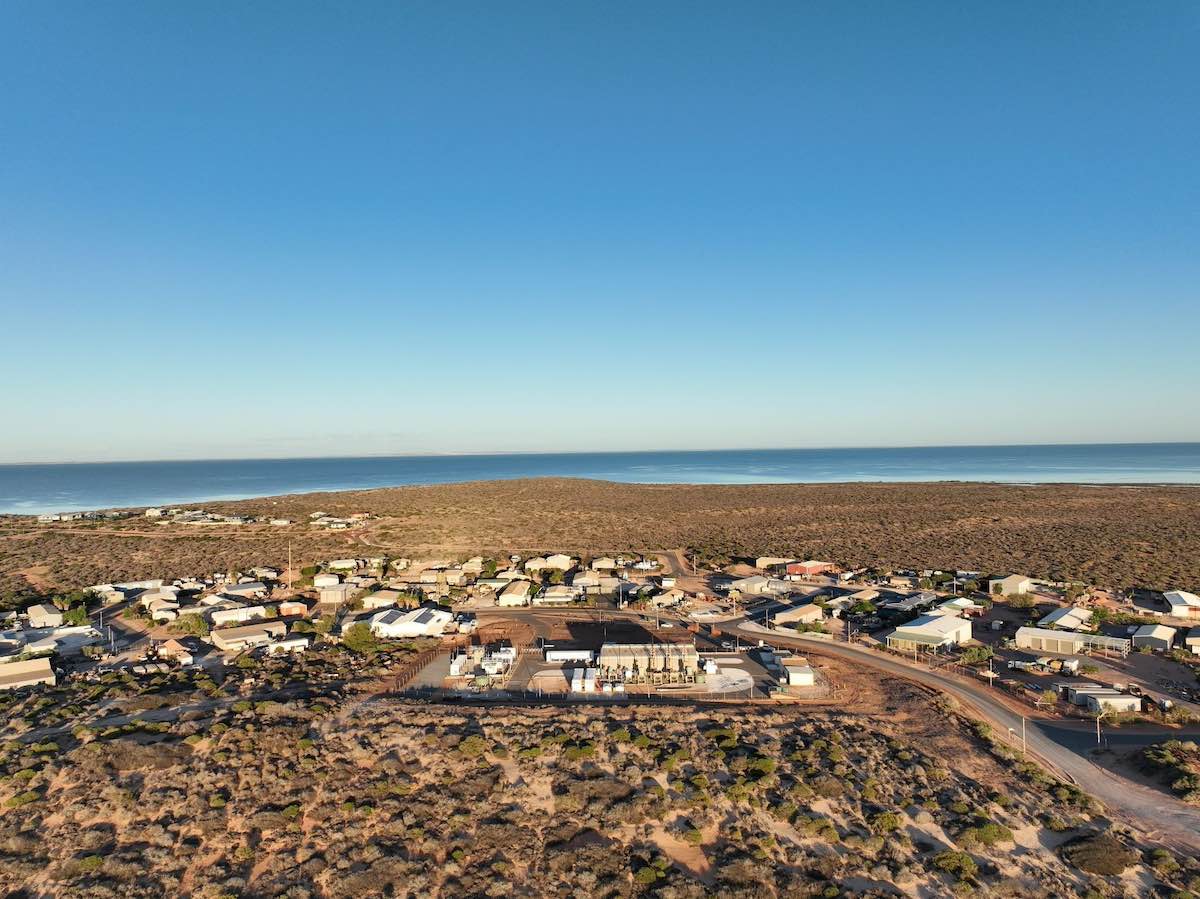An Australian-first trial of green hydrogen generation and storage as part of a remote solar and wind-based microgrid has found that the energy industry remains on a “substantial learning curve,” when it comes to integrating renewable hydrogen into real-world power systems.
The Western Australia government this week released its first Public Knowledge Sharing Report on the Denham Renewable Hydrogen Microgrid, a project trialing the use of a hydrogen electrolyser and fuel cell as an alternative to fossil fuel.
The ground-breaking project was completed in late 2022 as part of a major upgrade to the existing hybrid microgrid of the coastal tourist town of Denham, which previously ran on a combination of wind power and diesel generation.
A new 1.5MW/1.7MWh battery, separate 640 kW solar farm and microgrid controller were also installed to coordinate the control of the different energy sources, including the hydrogen produced electricity and power from three refurbished wind turbines.
The green hydrogen component is designed to use electricity from its own dedicated 704kW solar farm to produce hydrogen using two 174kW electrolysers, which is compressed and stored as gas on site in a pressurised storage system.
The aim is that when solar generation is not available, Horizon Power uses the stored hydrogen through a 100kW fuel cell to produce electricity – a “baseload” renewable power supply to supplement the diesel generation in Denham.
“I want to see WA become a renewable energy powerhouse, and hydrogen will have an important role to play in our clean energy future,” said WA premier Roger Cook this week.
“This innovative project helps to reduce our reliance on diesel in remote areas, delivering cleaner, affordable and reliable power for Denham.”
But the 22-page Knowledge Sharing report is candid about the pitfalls along the road and the barriers that still need to be overcome for renewable hydrogen to play a meaningful role supporting renewable power grids.
For example the report notes that when expressions of interest were first sought in early 2020, “there were no companies in Australia that Horizon Power could identify that had completed a renewable hydrogen facility, using the hydrogen directly for electricity generation in a power system via a fuel cell.
“EPC contractors, local engineering houses, and local regulatory authorities also have little experience dealing with these technologies and the whole industry is on a substantial learning curve.”
That said, there are many lessons learnt already from the Denham Renewable Hydrogen Microgrid, including that the intermittency of solar generation can be less than ideal for the smooth and sustainable operation of the hydrogen electrolysers.

Denham Renewable Hydrogen Microgrid. Source: Horizon Power
“The concern is the solar farm output could drop below the load of the electrolyser due to cloud events, so powering the electrolyser from the solar farm ‘instantaneous’ output may not be able to supply the minimum of 30 minutes of continuous operation that is required,” the report says.
“Also, it has been identified that cloud events may result in stops and starts during scattered cloudy days.
“With every start requiring a 38 mins of run time, [this] can lead to the use of other energy sources as the electrolysers continue to operate at a low output while cloud cover continues.”
The report concludes that the answer to this problem could be the addition of batteries.
“After design development, it appears that any future Hydrogen System (relying heavily on intermittent renewables) may need to consider the provision of a BESS, with sufficient capacity to power the electrolyser for a few start‐up cycles and provide smoothing and operational reserve functions for the solar and/or wind power generation systems,” it says.
The report also notes that hydrogen fuel cells have their limitations, too, in terms of jumping in to supply power when the wind drops or the sun goes behind a cloud.
“The response time of the fuel cell is currently not expected to be able to supply rapid fluctuations in load due to mechanical limitations of the fuel cell, so it is expected that a fuel cell can provide a base load supply but has limitations in performing voltage and frequency support,” it says.
“In the case of Denham the diesel generators or the BESS will perform this function to maintain the system strength. Horizon Power will investigate these limitations of the fuel cell in the next stage.”
Further challenges to the project’s success were presented by the location of the microgrid, which is in a remote, cyclone prone area with high temperatures experienced in summer and a limited water supply.
The report notes there was an “underestimation of potable water required to effectively run the hydrogen plant, noting that water is a precious resource in Denham which has two reticulated water supplies in the town: being drinking quality and saline.”
The report also notes that the initial design did not adequately allow for the cooling and operation of the electrolyser and fuel cell containers, and this resulted in the need for a larger evaporative cooling tower system.
“The inexperience of Horizon Power, the lead contractor and the subcontractor integrating the various equipment packages is significant,” the report says.
“This inexperience has resulted in the design and engineering deliverables going through more iterations than expected, causing significant timing delays to the overall project.
“It should be noted however that improving industry knowledge is one of the main objectives of this project.”








